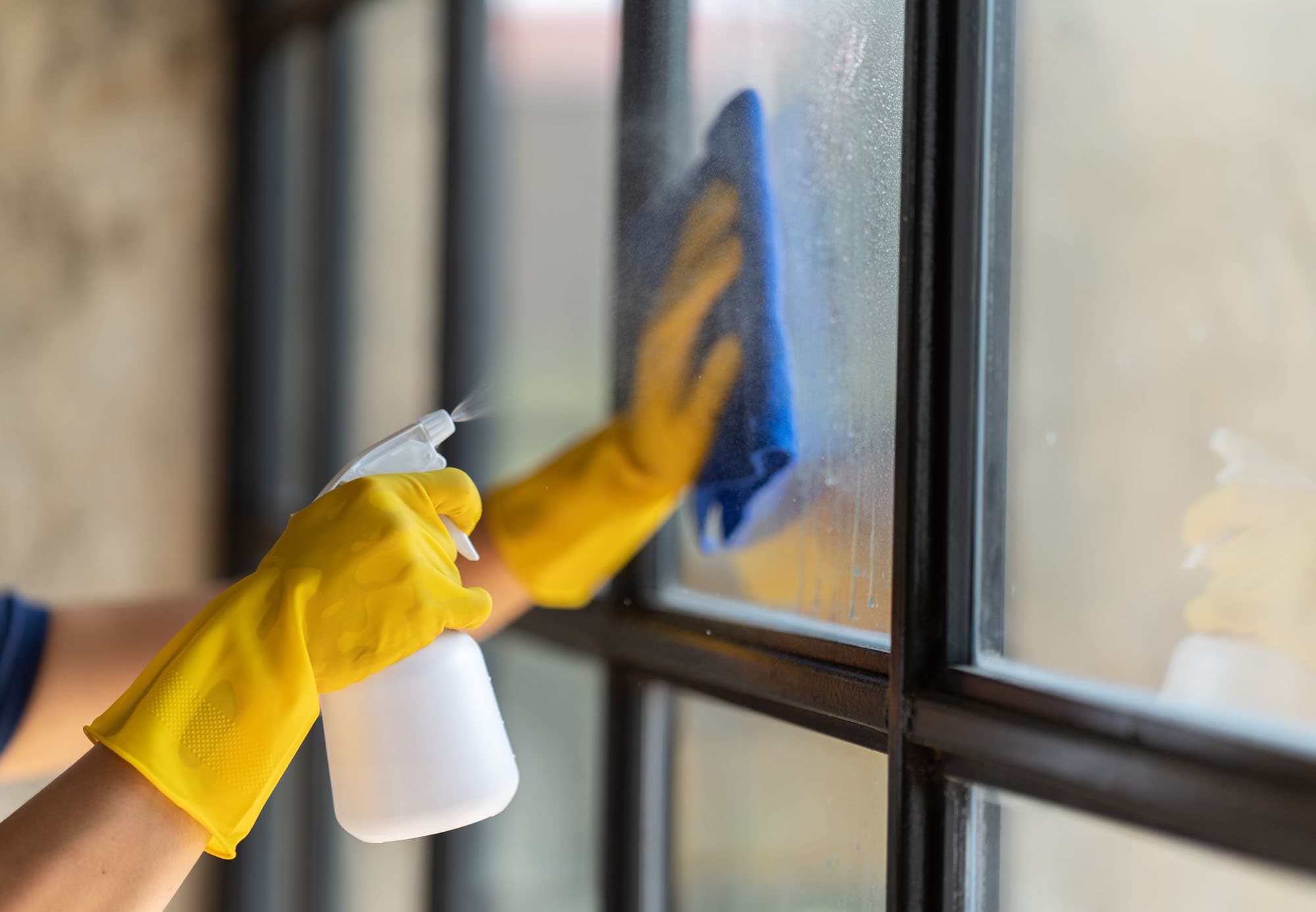To remove paint residue found during your walk-through, start by identifying the paint type—latex or oil-based. Gather supplies like a putty knife, rags, warm soapy water, and appropriate solvents like mineral spirits for oil-based paints. Test your chosen method on a small area first to avoid damage. Use the solvent gently to lift the residue, then clean with soap and water to remove any traces. Finally, consider preventive measures for the future, such as using painter’s tape and drop cloths. There’s plenty more to uncover about effective techniques and tips, so keep exploring your options!

Identify the Type of Paint
Before you tackle removing paint residue, it’s crucial to identify the type of paint you’ve been working with. Knowing whether it’s latex, oil-based, or another type will guide your next steps and guarantee effective removal.
Latex paints are water-soluble, so soap and water often do the trick. Oil-based paints, however, require solvents like mineral spirits. If you’re unsure, check the paint can or consult with your local hardware store for advice.
Identifying the paint type not only makes your job easier but also helps you choose the safest methods for those around you. By doing this, you’re serving others and promoting a clean environment.
Gather Necessary Supplies
To effectively remove paint residue, you’ll need to gather a few essential supplies. Start with a putty knife or scraper to gently lift the residue without damaging surfaces.
Next, grab some rags or paper towels for easy cleanup. A bucket of warm soapy water is also helpful for rinsing off any loose paint.
Depending on the paint type, you might need a solvent like rubbing alcohol or vinegar for tougher spots. Don’t forget to wear gloves to protect your skin!
If you’re working on a delicate surface, consider a soft-bristle brush to avoid scratches. With these supplies ready, you’ll be well-equipped to serve others by restoring their space to its original beauty.
Test on a Small Area
How can you guarantee that your chosen method for removing paint residue won’t damage the underlying surface? The key is to test on a small area first.
Select a discreet spot where any potential damage will be less noticeable. Apply your chosen paint removal method gently and observe how the surface reacts.
Take note of any discoloration, peeling, or other adverse effects. If everything looks good after a few minutes, you’re likely safe to proceed.
This step not only protects the integrity of the surface but also shows respect for the space you’re working in. Remember, patience pays off.
Use Solvents for Removal
If you’re dealing with stubborn paint residue, solvents can be your best ally in the removal process.
Choose a suitable solvent like mineral spirits, acetone, or denatured alcohol, depending on the type of paint. Before applying, verify you’re in a well-ventilated area and wear gloves to protect your skin.
Dampen a cloth or sponge with the solvent and gently blot the affected area. Avoid rubbing too hard, as this can damage the surface underneath. Take your time and allow the solvent to penetrate the paint, making it easier to lift.
Once you’ve removed the residue, clean the area with soap and water to eliminate any solvent traces. This approach not only house cleaning cambridge helps you but also leaves surfaces ready for others to enjoy.
Scrape Off Excess Residue
After using solvents to tackle some of the stubborn paint residue, you may still find excess bits clinging to the surface.
It’s time to grab a sturdy scraper or putty knife. Hold the scraper at a slight angle and gently push it against the residue. This’ll help lift the excess without damaging the underlying surface.
Be patient and work in small sections, ensuring you’re not applying too much pressure. If you encounter particularly tough spots, consider reapplying the solvent and letting it sit briefly before scraping again.
Clean With Soap and Water
Once you’ve scraped off the bulk of the paint residue, it’s essential to clean the area with soap and water to remove any lingering particles and solvents.
Start by mixing a few drops of mild dish soap with warm water in a bucket. Grab a soft cloth or sponge, dip it into the soapy solution, and gently wipe the affected area. This step not only cleans but also guarantees you’re leaving a safe environment for others.
Rinse your cloth or sponge frequently to avoid spreading the paint residue around. After you’ve thoroughly cleaned the surface, wipe it down with plain water to remove any soap.
Finally, dry the area completely to prevent slips and keep it welcoming for everyone.
Prevent Future Residue Issues
Cleaning up paint residue is just the first step in maintaining a tidy space. To prevent future residue issues, always use high-quality painter’s tape to protect surfaces.
Consider applying a drop cloth to catch any drips or spills during projects. When painting, work in smaller sections and take your time, as rushing can lead to accidents.
After finishing, clean your brushes and rollers immediately to avoid hardened paint residue later. If you notice any splatters, address them right away.
Finally, encourage others to follow these practices, fostering a community of careful and considerate painters. By taking these proactive steps, you’ll help guarantee your environment remains clean and inviting for everyone.
Conclusion
Now that you’ve tackled that pesky paint residue, picture your walk-through gleaming like new, free from unsightly splatters. With the right tools and a little elbow grease, you’ve transformed the space into a canvas of cleanliness. As you step back, take pride in your hard work—no longer will those stubborn stains haunt your home. Keep these tips in mind, and you’ll guarantee your surfaces stay pristine, ready for whatever creativity comes next!